|
Demystifying ESB
Enterprise Service Bus evolved out of SOA
- IT Components can be accessed as services
- Defined form of invocation and entry points to service
- Business process -Event-driven/Asycnhronous Inovcation of
Services
- Composite Application mix of existing and new components
Fundamentals of SOA for Intergration
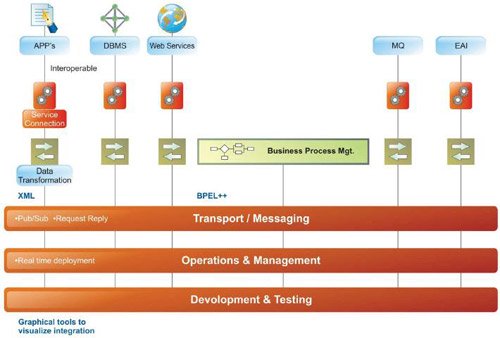
Definition (An Affordable EAI) ?
An ESB is a standards-based, service-oriented backbone capable of
connecting hundreds of application endpoints. ESBs combine
messaging, Web Services, XML, data transformation and management to
reliably connect and coordinate application interaction. The ESB
deployment model is an integrated network of collaborating service
instances, deployed in distributed service containers.
Enterprise Service Bus Standards based Integration
- Communication and data routing (JMS)
- Data protocols (XML)
- Transformation (XSLT)
- Content Based Routing (CBR)
- Connectivity (JCA)
- WebServices
- Security
- Pre-built Business Components andConnectors
Related Infrastructure andConcepts -not explicitly
part of an ESB
- Business Process Management (BPM)
- Business Process Modelling (BPEL)
- B2B trading partner management
Why Standards for Integration?
Business and Technology
Drivers
- Increases ability to integrate
- No platform or vendor technology dependencies
- Lowers cost of integration
- Minimizes need for expensive proprietary adapters
- Larger talent pool, broader education offerings
- Integration projects become more predictable
Standars-Based Integration
Backbone of Standards based
Integration
- Deploying a Service-Oriented Architecture (SOA)
- Use of XML
- Rise of JMS as the de-facto for underlying communication
mechanism
- Data-flow processes for business process deployment
- Connections to Packaged Apps, Legacy Systems using J2EE
Connector Architecture (JCA) and JMS-compliant connectors
- Web Services
Service-oriented
architecture (soa)
Flexible, extensible
integration
- Design methodology for distributed systems
- Applications expose functionality through service
interfaces
- Loosely-Coupled
- Platform and language neutral
- Impervious to implementation changes
- Coarse-Grained-business level Interfaces
- Asynchronous
- No single points of failure
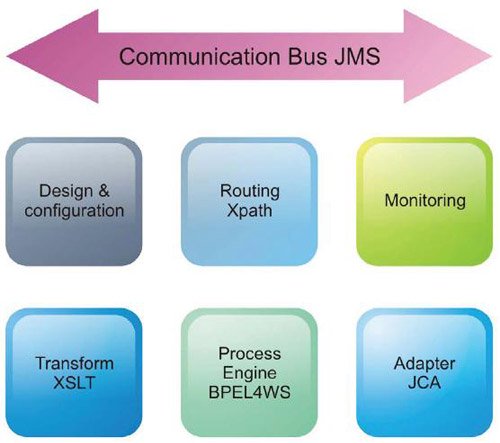
Demystifying ESB
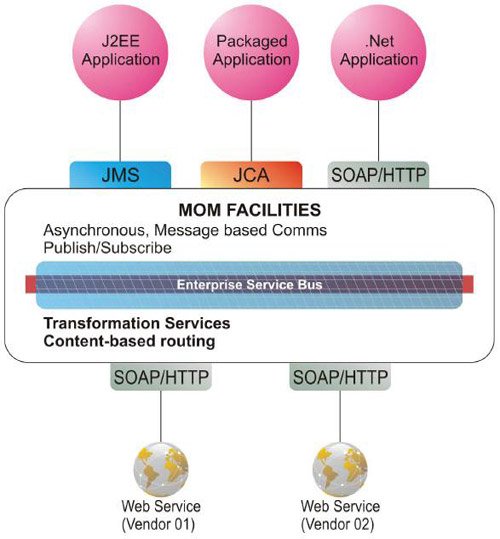
Business Needs
- Want to replace Broker and MQ due to high TCO and
complexity
- Reduce cost of new distribution centers, with guaranteed
messaging
- Need web-service access to data
- Need choreography of services
- Integrate new applications faster and cheaper
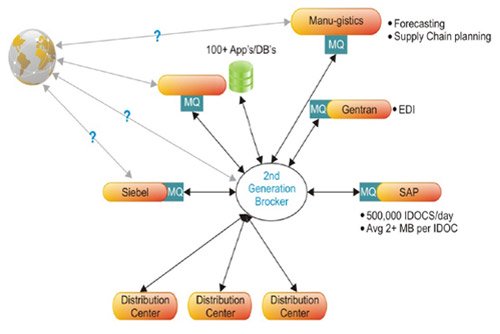
Build On Existing
Infrastructure
Solution
- Services Oriented Integration
- Reuse messages/events with existing MQ
- Incrementally add transformation, orchestration,
distributed management
- Gain immediate value from higher ROI projects
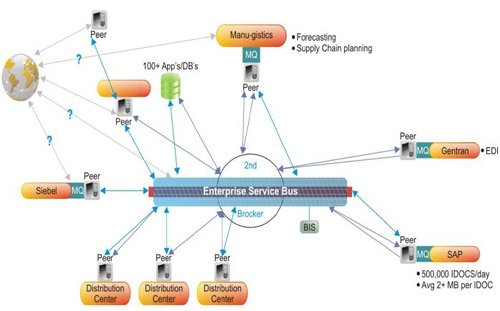
ESBs are best suited for
- Projects that will mix heterogeneous application services
(for example, Microsoft or Java portals with disparate Java or
Microsoft server back ends)
- Enterprises who want to start with a basic SOA and add
other features later.
- Enterprises that want to assemble their own best-of-breed
comprehensive integration suites
- Mix and match off-the-shelf adapters, BPM, B2B and BAM
tools from other vendors.
- Distributed services (written in different programming
languages) running on disparate nodes on different operating
systems
Types of ESB
- ESBsbased solely on SOAP -Web services brokers (WSBs)
- MultiprotocolESBsthat support JMS, Web services and other
communication mechanisms
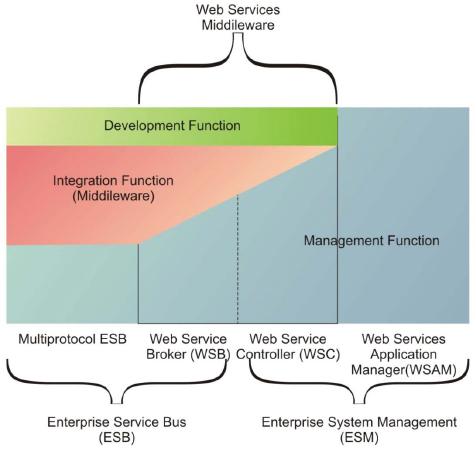
ESB -VENDORS (2009)
Support SOAP/HTTP and additional protocols guaranteed delivery,
publish-and-subscribe often following the JMS standard
- Fiorano ESB (native support for JMS, Peer-to-Peer
architecture)
- IBM ESB (non-native support for JMS, Hub/Spoke
architecture)
- Oracle ESB (based on BEA acquisition, Hub/Spoke
architecture)
- TIBCO ESB(hub/spoke architecture)
|